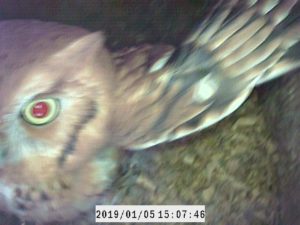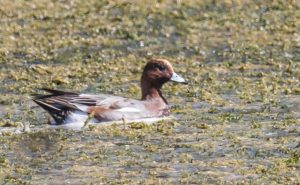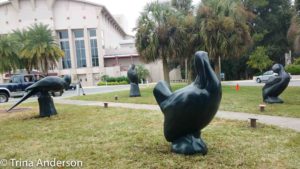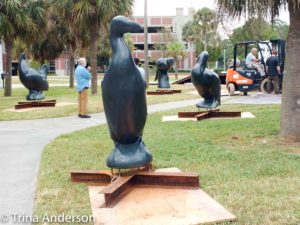by Debbie Segal, extracted from Rex Rowan’s History of Birding in Alachua County
The Alachua Audubon Society wishes to recognize the longest-standing member of Alachua County’s birding community. After many decades of leading field trips for AAS, the St. Mark’s field trip in early January will be John Hintermister’s final Audubon-led field trip.
John was a trail-blazer to birding in Alachua County and his contributions to birds, birding, science, and conservation are immense.
As a young boy, John was inspired to watch birds when two women would take him on birdwatching excursions. By the time John was 11, he was hooked on birds. John and his brother would pedal their bikes to Lake Alice and by noon, would sometimes list 100 species. When describing this, John said, “Now I don’t know if we identified them all correctly, but we would get 100 species.” They may well have identified them correctly because upon seeing a bird, they would stop and read aloud the entire description from their Peterson field guide.
In January of 1960, John attended the inaugural meeting of the AAS. Among its charter members were Oliver Austin, Marjorie Carr, J.C. Dickinson, Jr., and 16-year old John Hintermister. Some of the first year’s field trips included River Styx, Lake Alice, the pinewoods north of the airport where Red-cockaded Woodpeckers nested, Devil’s Millhopper, Paynes Prairie, and San Felasco Hammock. Both Paynes Prairie and San Felasco were still in private ownership.
During the 1960’s and 70’s, the National Audubon Society sponsored a series of nationally-touring nature films, and these films served as AAS’s program meetings. John attended many of these early Audubon programs. Roger Tory Peterson was a regular on the tour, and when he visited Gainesville every 2-3 years, the University Auditorium was booked to hold the crowds. On one of those occasions, John remembers handing his tattered and well-used field guide to Peterson to sign, and Peterson responding, “Now this is the way I like to see the field guide.”
The first Gainesville Christmas Bird Count (CBC) began in 1957, and during its infancy, the CBC had few participants and they birded only from sunup until lunchtime. There were no assigned territories, no team captains, and no organization of any sort. In 1972 at the age of 29, John became the official compiler of the Gainesville CBC. After reading in Peterson’s Book, Birds over Americaabout the methodical way in which the Bronx CBC was conducted, John sought to emulate it for the Gainesville count. He instituted dark-to-dark counts. He cut up a topographic map of the count circle to make territories, appointed team leaders, and assigned them important birds to find in their particular tracts. John served first as compiler of the Gainesville CBC from 1972 – 1981 and then as co-compiler with Howard Adams from 2003 until 2014. During the interim 21-year period from 1981 – 2003, the co-compilers were Craig Parenteau and Barbara Muschiltz.
In the mid-70’s John began teaching birding classes through SFCC. There is no telling how many people John inspired through these birding classes, but we know that Mike Manetz and is one. Those SFC birding classes are still taught by AAS and now are led by Charlene Leonard and Cindy Boyd.
In 1985, John became the original Alachua County coordinator of Florida’s Breeding Bird Atlas, and it was during this atlas survey that Hooded Warblers were discovered breeding in San Felasco Hammock. He also served as president of AAS and a long-time board member. During his almost 6 decades of involvement with AAS, he has led a countless number of field trips.
John once said, “There are birdwatchers and there are people who put their lives on hold in order to bird.” We know which category defines John. If there is one person who has influenced the birding culture in Alachua County more than anyone else, I think we would all agree, it is John Hintermister.
AAS is sincerely grateful to John for his dedication to all things birds, his unwavering enthusiasm as he has mentored a generation of birders, and his almost 60 years of devotion to AAS. John has been presented with a life-time membership to AAS.







